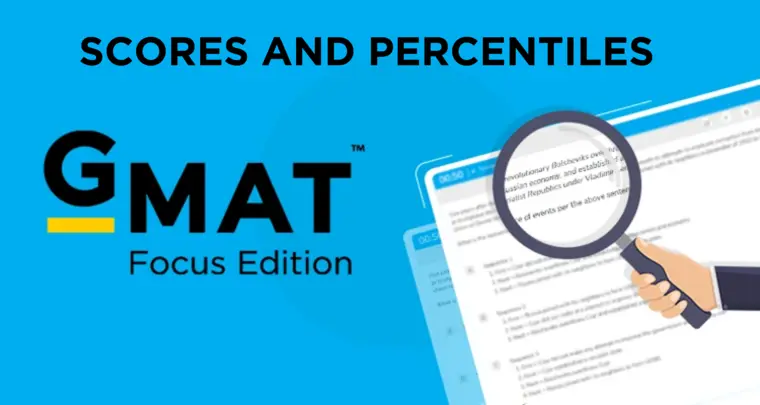In this article, we’ll look at the solution to the 700-level GMAT Official guide critical reasoning question. We have analyzed the 5 answer choices and arrived at the correct choice through 4 steps:
- Understanding the Argument
- Vizualization of Argument
- Prethinking
- Answer Choice Analysis
General Information on the GMAT Official guide CR question
- Difficulty Level: Hard (95% – Hard)
- Accuracy: 42% (GC)
- Most Common Incorrect option choice: 19% C, B, and D also popular (GC)
- Question Type: Weakener (Actually – “does not weaken”)
- Source: GMAT Official Guide [Pre-2000]
Question: Lark Manufacturing Company initiated a voluntary…
Lark Manufacturing Company initiated a voluntary Quality Circles program for machine operators. Independent surveys of employee attitudes indicated that the machine operators participating in the program were less satisfied with their work situations after two years of the program’s existence than they were at the program’s start. Obviously, any workers who participate in a Quality Circles program will, as a result, become less satisfied with their jobs.
Each of the following, if true, would weaken the conclusion drawn above EXCEPT:
[Refer to the GMAT Official Guide for options]
Solution: Lark Manufacturing Company initiated a voluntary
This is an excellent question. Instead of finding the weakener, we need to find the one option choice that is not a weakener! Let us first understand the argument.
Understanding the argument
- Lark Manufacturing Company initiated a voluntary Quality Circles program for machine operators.
A company called Lark Manufacturing Company (Lark) began a voluntary (i.e., not compulsory) Quality Circles (QC) program for machine operators.
- Independent surveys of employee attitudes indicated that the machine operators participating in the program were less satisfied with their work situations after two years of the program’s existence than they were at the program’s start.
Results of independent Surveys indicated that:
The machine operators who were participating in the QC program were less satisfied with their work situation after two years of the QC program, as compared to when the program was started.
For example –
Level of work situation satisfaction at the start of the QC program = 70% (say)
Level of work situation satisfaction after two years of the QC program = 50% (say)
- Obviously, any workers who participate in a Quality Circles program will, as a result, become less satisfied with their jobs.
Based on the above survey results, the author concludes that any workers who participate in a QC program will, as a result of the program, become less satisfied with their jobs.
Visualizing the Argument
Conclusion: Any workers who participate in a Quality Circles program will, as a result, become less satisfied with their jobs.
Let us visualize this conclusion properly. Here are some important aspects of the conclusion.
“Any workers”: not just machine operators, all workers.
“A QC program”: the conclusion is not about Lark’s QC program or a QC program that is similar to Lark’s. It is about QC programs in general.
“As a result”: In essence, this means the author is blaming the QC program for the reduction in job satisfaction. As a result of participating in a QC program, they become less satisfied.
In essence, the conclusion is that any worker who participates in a QC program will, as a result of participating in the program, become less satisfied with his/her job.
Logic: On what basis is this conclusion being made?
Going back to the example we created,
Example (Survey Results) –
Level of work situation satisfaction at the start of the QC program = 70% (say)
Level of work situation satisfaction after two years of the QC program = 50% (say)
The conclusion is being made purely on the basis of the survey results, which indicate a reduction in work situation satisfaction among machine operators at Lark, who are participating in the QC program, from when they started the program to two years after that.
Notice that the conclusion is based on data pertaining to machine operators at Lark and the QC program at Lark, but the conclusion is a generalized statement about workers in general (not just machine operators, not just workers at Lark), and about QC programs in general (not just the one at Lark). We should pay attention to such aspects.
Prethinking
Let us first look at the question stem – Each of the following, if true, would weaken the conclusion drawn above EXCEPT:
So, instead of finding a weakener, we need to find the one statement that is not a weakener. Let us pre-think a few weakeners to ensure we apply a deep level of thought to the argument.
Prethinking Question: What new information will weaken our belief in the conclusion above?
To identify this, let us first identify the scenarios where the conclusion breaks.
When can we not say that any workers who participate in a QC program will be less satisfied with their jobs because of the QC program?
Framework 1 – Statements indicating that the survey results are somehow not representative enough to make the conclusion.
- What if the QC program at Lark is not representative of QC programs in general?
For example – consider a statement indicating that the QC program at Lark was run by incompetent personnel, unlike most QC programs that are run by extremely competent personnel.
If this is true, then it may very well be that this particular QC program caused a reduction in job satisfaction, but QC programs, in general, do not negatively impact job satisfaction. In this case, our belief in the conclusion is weakened.
- What if machine workers are not representative of workers in general?
For example – what if the QC program is well designed for most types of workers but not for machine workers? As a result of the program not being well designed for them, those machine workers who continue to participate in the program are getting dissatisfied with work overall.
So, the QC program is the cause of the reduction of job satisfaction for this group called machine workers. But for most other groups of workers, the QC program may be wonderful. In such a situation, the machine workers are not representative of “workers” in general. This again weakens the conclusion.
Framework 2 – Statements indicating that the reduction in satisfaction is due to some alternate reason.
- What if the reduction in job satisfaction is because of economic factors?
For example
- Job losses/threat of job loss at Lark due to economic recession.
- Salary reduction/threat of salary reduction at Lark due to economic recession.
- What if the reduction in job satisfaction is due to some non-economic factor?
For example
What if Lark made a policy change sometime between the first survey (when the QC program started) and the second survey (two years after)? For example:
- Forcing workers to work for more hours/day or an additional half-day per week
- Reducing the number of leaves available
- Increasing the price of food at the canteen, etc.
In such a situation, the reduction in work satisfaction was not due to the QC program but due to one of the above reasons. Such a scenario also weakens the conclusion.
- What if a similar reduction in job satisfaction was observed even for those workers who did not participate in the QC program?
In such a case, yet again, it is hard to blame the QC program because folks who did not participate in it also showed a similar reduction in job satisfaction. In such a case, too, there must be some other alternate reason.
Framework 3 – Statements indicating that the reverse of what the conclusion states is true.
In other words, any statement suggesting that the QC program does lead to improved work/job satisfaction will also weaken the conclusion that blames the QC program for the reduction in job satisfaction.
For example:
- More comprehensive and detailed Employee Satisfaction surveys conducted at the same times as the employee attitude surveys indicate an increase in overall job satisfaction among the machine workers who attended the QC program.
There may be many more weakeners. In the test scenario, we should prethink 1-2 solid weakeners and move to options. While solving otherwise, we should dig deep and try to identify as many as we can. This builds prethinking muscle.
Answer Choice Analysis
Choice A: The second survey occurred during a period of recession when rumors of cutbacks and layoffs at Lark Manufacturing were plentiful.
Incorrect: This is in line with our framework two, weakener 1. Option A presents an alternate reason (other than the QC program) for the reduction in job satisfaction – the threat/worry of layoffs. It weakens our belief in the conclusion. Hence, this option is incorrect.
Choice B: The surveys also showed that those Lark machine operators who neither participated in Quality Circles nor knew anyone who did so reported the same degree of lessened satisfaction with their work situations as did the Lark machine operators who participated in Quality Circles.
Incorrect: This is similar in thought to our framework two, weakener 3. Option B also suggests that there is some other alternate reason for the reduction in job satisfaction – if machine operators who were not involved with the QC program also reported the same degree of lessened satisfaction as did the operators who participated in the QC program, then how can we confidently say that the QC program is the reason for the reduction? There must be some other cause. Hence, this option also weakens our belief in the conclusion and is therefore incorrect.
Choice C: While participating in Quality Circles at Lark Manufacturing, machine operators exhibited two of the primary indicators of improved job satisfaction: increased productivity and decreased absenteeism.
Incorrect: This is along the lines of our framework three, though a completely different point. This option suggests that the reverse of what the conclusion states may be true – increased productivity and decreased absenteeism are considered primary, i.e., main indicators of improved/increased job satisfaction. If the workers who attended the QC program were exhibiting these traits while they were a part of the program, it would suggest that the QC program had increased job satisfaction rather than reduced it. Hence, it weakens our conclusion and is not the correct answer.
Choice D: Several workers at Lark Manufacturing who had participated in Quality Circles while employed at other companies reported that, while participating in Quality Circles in their previous companies, their work satisfaction had increased.
Incorrect: This option is also along the lines of framework one, weakener 1, and also framework 3. If many workers at Lark who took part in QCs in previous companies reported that their work satisfaction had increased, it suggests that
-> QCs typically have the opposite effect of what the conclusion states, i.e., increased work satisfaction.
-> The QC program at Lark, in particular, may have been an exception in that it had a negative effect, but it is not representative of QC programs in general.
Hence, option D is also clearly a weakener.
Choice E: The machine operators who participated in Quality Circles reported that, when the program started, they felt that participation might improve their work situations.
Correct: Given that we have eliminated the other options, we know E is the correct answer. But let us also analyze it.
Option E tells us that the machine operators who took part in the QC program believed that participating in the program might improve their work situation.
Level of work situation satisfaction at the start of the QC program = 70% (say)
The machine operators believed that this program would make them more satisfied at their jobs. (say 70% to 90%).
Now, as per the survey done two years later, the work satisfaction reduced.
Level of work situation satisfaction after two years of the QC program = 50% (say).
This may at best make the workers disappointed that the QC program did not increase their job satisfaction – they expected the QC program to increase their job satisfaction from 70% to 90%, but the satisfaction went down from 70% to 50%.
The core point: we only know that job satisfaction reduced in this time, against the expectation. We still do not know what the actual reason is – the QC program or something else.
Just because workers expected the program to increase job satisfaction, it does not necessarily mean that the QC program was the cause of the reduction in work satisfaction. The reason for the reduction may be other aspects like impending job loss or policy changes (extra working hours). At the same time, it may very well be that the QC program is actually the reason for the reduction in satisfaction. Option E, as it stands, does not clearly strengthen (QC was responsible for the reduction) or clearly weaken (some other reason was responsible for the reduction).
Hence, it is not a weakener, so it is the correct answer.
Core Learnings from this question:
- Always read the question carefully before jumping to analysis. This is not a weaken question; it is a “weaken except” question.
- Structured prethinking – in terms of both broad frameworks and specific situations -can help us in building a superb understanding of the argument.
- Visualizing each aspect of the conclusion – notice how data about Lark is used to make a generalized conclusion. Observe such aspects.
- Analyze option choices thoroughly. While POE can, of course, work, it is also important to analyze E deeply and understand it.
Planning to take the GMAT? We can give you access to quality online content to prepare. We are the most reviewed GMAT prep company on the GMAT club with more than 2200+ reviews and have delivered 10x 700+ scores than the average GMATClub partner. Why don’t you take a free trial and judge it for yourself? Write to us at acethegmat@e-gmat.com in case of any queries.


![[GMAT OG Solution] Lark Manufacturing Company initiated a voluntary…](https://e-gmat.com/blogs/wp-content/uploads/2021/11/lark-manufacturing-company-initiated-a-voluntary.png)












